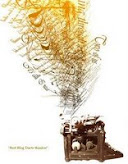Serusier was born to a wealthy family in Paris in 1864. He earned two degrees from the Condorcet Lycee: one in philosophy and one in the sciences. He worked only a short time before going to the Academie Julian to study art. Here, he found his calling and made a great many friends, including Maurice Denis who also became a member of the Nabis.
At the Academie Julian, Serusier learned artist techniques in the traditional manner of copying the masters. It wasn’t until 1888 when he went to Pont-Aven and met Paul Gauguin that Serusier developed his own style. Gauguin encouraged Serusier to use bright colors and not hide his own ideas but show them boldly in his paintings. Gauguin guided Serusier to paint a colorful landscape on a cigar box lid which became known as “the Talisman” among Nabis. Below is another example of Serusier’s bright colors: Washerwomen at the Laita River Near Pouldu.
 The group formed when Serusier returned to Paris and met often to discuss artistic ideas, especially what the Nabis found wrong or broken in the more established art world. They were very interested in symbolism and religious thought, as well.
The group formed when Serusier returned to Paris and met often to discuss artistic ideas, especially what the Nabis found wrong or broken in the more established art world. They were very interested in symbolism and religious thought, as well.When Gauguin went to Tahiti in 1891, the Nabis gradually disbanded. Eventually Serusier stopped using pure, bright colors, choosing instead to mix grey into his paints. His paintings also became more realistic, as you can see in the painting shown below, Rainshower.

In 1895, Serusier went to a monastery in Germany where he learned to paint using measurements and numbers. His new style did not appeal to his friends in Paris but he continued anyhow, committed to the new ideas.
He studied Egyptian and Italian art, as well as tapestries of the Middle Ages to further understand the decorative arts and to learn to simplify his paintings. In 1914 he published a book, “ABCs of Painting” which was a summary of his life’s studies in art.
He died in 1927.
He studied Egyptian and Italian art, as well as tapestries of the Middle Ages to further understand the decorative arts and to learn to simplify his paintings. In 1914 he published a book, “ABCs of Painting” which was a summary of his life’s studies in art.
He died in 1927.








No comments:
Post a Comment